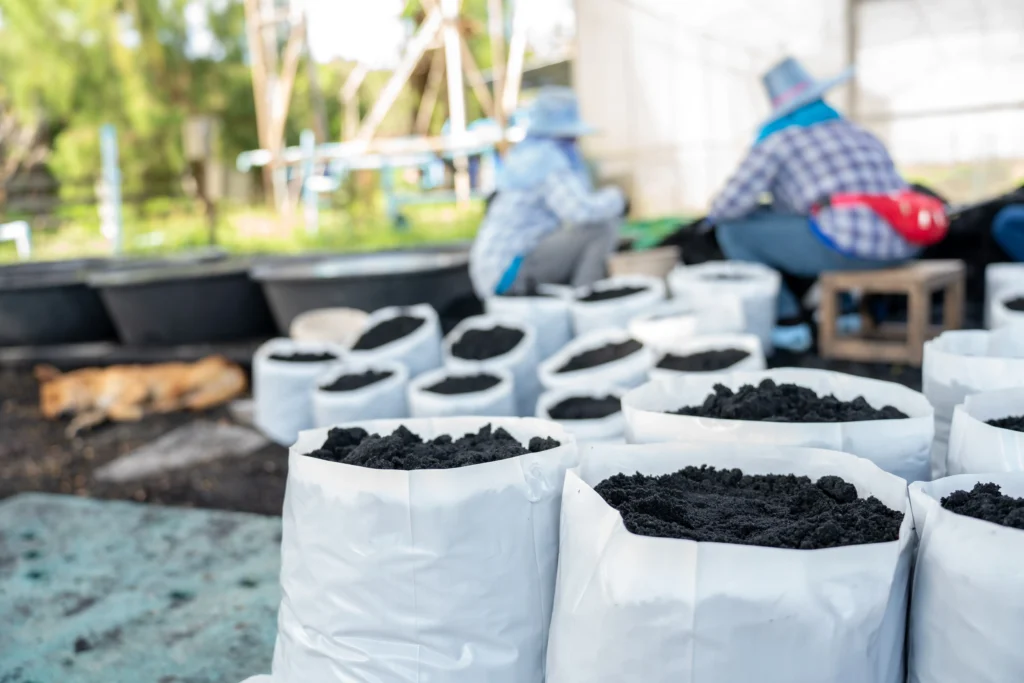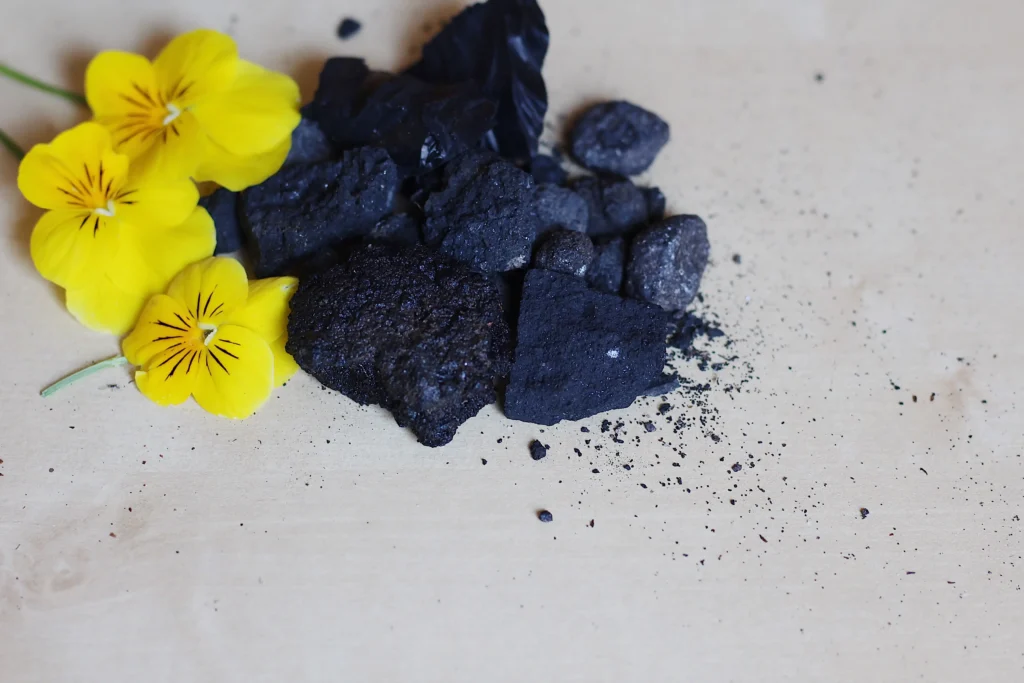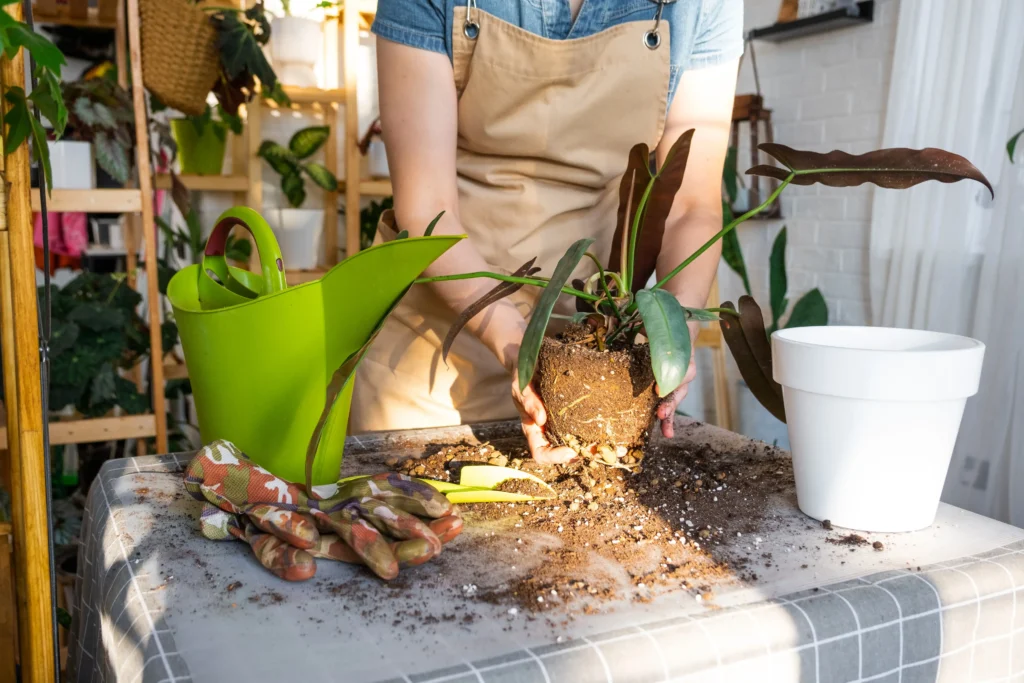The growth, health and long life of your orchids will always be determined by the options you choose for them. Potting media is one of those. And using charcoal in it is a famous choice.
Charcoal is chosen by orchid lovers because of its high porosity, arability and good drainage. Although the ratio of Charcoal in a potting mixture may vary depending upon the type of orchid we are dealing with, but they are always a good option.
When combined with bark, husk, moss and perlite in the right ratio, their efficiency increases. Also, charcoal is highly accessible to acquire while being affordable at the same time.
However, you can’t just put in the chunks in your potting mix and some due care is required before using it. I’ve covered the right mixes, advantages and potential challenges in next section. Let’s dive in.
Table of Contents
How to Incorporate Charcoal in Orchid Potting Media?
Charcoal, because of its aerability and durability is an interesting choice for your potting media mixture. It is common alternative to coconut husk, especially in humid climates.
There are several types of Charcoal available for you to choose from. Your first priority in any case should be natural horticultural charcoal or if you could get particularly hardwood charcoal.
Some other varieties include BBQ charcoal and softwood charcoal containing unsuitable chemicals. You should try to avoid using them and treated fireplace remains.
I use a variety or a mixture of potting materials for my orchid varieties. Some varieties that react well with charcoal use include:
- Cattleya: Since Cattleya requires excellent drainage and moderate moisture a combination of fir bark, perlite and coconut husk works best for it. The addition of charcoal helps reduce bacterial and fungal risks.
- Vanda: Vanda just does not like much water, so to promote its good growth, always use large fir bark, charcoal and coconut husk. Charcoal addition is effective in dry climates due to charcoal’s quick-drying nature.
- Masdevallia: For orchids like Masdevallia, which love to retain moisture while having the right amount of aeration, sphagnum moss, charcoal and perlite work the best.
- Oncidium: Oncidium, is not a fan of large amounts of water, so for it, I recommend using large fir bark, charcoal and coconut husk.
- Dendrobium: The biggest fan of water, dendrobium, always loves and thrives in a mixture of fir bark, peat moss and perlite. As they thrive in quick-drying setups, charcoal is must.
You might be wondering to use only charcoal (100% concentration) as a potting mix for your orchid. For several reasons, I recommend highly against it. Charcoal holds little to no water as well as nutrients. Your orchid would face difficulty in healthy growth.
Also, it promotes aeration preventing algal and fungal infection as well as breakdown of cellulose and lignin etc. To be on the safer side, I would recommend you to use a mixture of 2-10% volume as it is what always works best for me. You can also see my potting mix guide for different varieties for further clarity.

The Benefits of Charcoal for Orchids
1. Aeration and Drainage
The reason, for which I will always recommend you to use Charcoal for your orchids is that it creates large air spaces. These spaces do not allow water to accumulate. They also ensure the free flow of air through the spaces. This prevents roots from rotting and ensures their healthy growth.
2. Bacteria and Fungi Control
Since charcoal allows aeration and drainage, anecdotal evidence suggests it controls the growth of harmful pathogens like bacteria and fungi from growing and breaking down cellulose, hemicellulose and lignin, while promoting the growth of beneficial microbes by them.
3. Salt Absorption
The air pockets created due to the use of charcoal in the mix, absorb excess salts, reducing the risk of salt burn.
4. Nutrient Retention
Although the charcoal mix has high drainage, the biggest advantage of using it in the mix is that it enhances the effectiveness of fertilizers by supporting slow nutrient release.
5. pH Stability
Charcoal mixture is typically neutral, but depending on water (distilled or salted) and fertilizers used the pH of the soil may change. So, to keep it neutral you will have to closely monitor the situation.
6. Filtering Properties
Some growers believe charcoal helps filter impurities and absorb toxins, contributing to a “cleaner” mix. However, unless the charcoal is specifically activated, its ability to trap impurities is limited to surface interactions, which may not significantly outperform other media components.
7. Mimics Natural Conditions
Orchids, always say yes to a good Charcoal mix. The reason behind this is that when it is combined with leaf mould or litter, it replicates native orchid habitats allowing them to thrive in a similar fashion.
8. Carbon Source
While some suggest that plants might use charcoal as a carbon source, this is less relevant in cultivated orchids. Plants primarily rely on photosynthesis for carbon, and the bioavailability of carbon from charcoal in potting mixes remains debatable.

Potential Challenges to Consider:
1. Salt Build-Up
The biggest advantage of using Charcoal sometimes turns out to be its greatest disadvantage as well. Charcoal has a porous nature, which allows water and air to move through it freely. At the same time, it traps salts. Salts can accumulate in the mix in huge amounts requiring regular flushing.
2. Root Attachment
I have seen some of Orchid roots not attaching well to charcoal as compared to other media. One of the reasons, this might happen is the use of old charcoal. You should replant your orchid with fresh charcoal to prevent root rot.
3. Limited Moisture Retention
Charcoal dries out quickly, especially in dry climates, potentially unsuitable for orchids needing consistent moisture. For this reason, I would advise against using 100% charcoal (except for tropical climates) but to go for a mixture according to the needs and demands of your Orchid.
4. Alternatives
Other inert fillers like perlite or LECA can provide similar benefits without potential drawbacks, like adsorbing nutrients (as seen with zeolite).
Charcoal vs. Leca
LECA retains water longer than charcoal, making it better suited for climates or growers needing less frequent watering. However, both allow good airflow around roots, though charcoal may contribute slightly more to drainage.
| When to Use LECA | When to Use Charcoal |
| For growers experimenting with semi-hydroponics. In conditions where prolonged water retention is beneficial. With plants that need consistent moisture levels, like Cynoches or Phragmipediums. | For cost-conscious growers. In warm climates with high humidity, where rapid drying is less of an issue. For orchids like Dendrobiums, which thrive in quick-drying setups. |
LECA and charcoal both offer unique advantages, and the choice depends on plant type, climate, and grower preferences.
Flushing and Maintenance
Charcoal can absorb salts, which may lead to issues if not managed with proper flushing. Use pure water (distilled, reverse osmosis, or rainwater) for flushing, especially if you’re using fertilizers. Flushing every 2-4 weeks is a good practice, depending on your watering schedule and fertilizer use.
You should interchange between distilled water, osmosis water, rainwater and lastly low-salt water with less than 150-200ppm dissolved solids. Regular flushing will help maintain a balanced pH, particularly if your water source has a stable pH.

Tips for Beginners:
Using Charcoal, especially in a mix of Orchids is never an easy task. It can be tricky, and here are some tips for you to get a quick head start.
- I recommend you start with a charcoal mix rather than 100% charcoal. Like for Cattleyas I use fir bark, perlite and coconut husk. This requires minimum maintenance and less effort.
- Whenever you use charcoal in the potting mixture, monitor the orchid’s response to charcoal, especially in terms of hydration and nutrient uptake. This will give you early signs if something goes wrong and you can take the required steps just in time
- For me, it is always best to use horticulture charcoal free from chemicals for the best results as one can never go wrong with anything organic.
- If you’re in a dry climate, charcoal might dry out faster than other mediums. Pairing it with sphagnum moss or other moisture-retentive materials could help balance moisture levels.
- If your orchid has to survive in a humid environment, charcoal, even in a high amount with its quick-drying properties can prevent root rot.
- Along with Charcoal, I will always recommend adding beneficial microbes to the charcoal medium which enhances plant health and helps manage pathogens. Quantum Orchids is one such product. It works just like yoghurt for people. With one tablespoon per gallon, it helps the plant to flower more while strengthening its roots.
FAQs:
How Often Should I Water Orchids in Charcoal?
Watering orchids depends upon the potting mixture used. If you are using a 100% charcoal mix, you will have to water the plant more than often sometimes more than 3-5 times a week. On the other hand, if you are using a Charcoal mixture in the pot mix you may have to rarely water the plant more like once a week. You can always check the texture of the soil and by determining the dryness you can water your plant accordingly.
How to Activate Charcoal for Plants?
From my experience, I highly recommend using activated charcoal for Orchids. Charcoal is usually activated by dipping it in a mixture of nutrient-rich solution allowing maximum absorption of nutrients and microbes preventing toxin build up and enhancing drainage.
How Much Charcoal Should You Use for Orchids?
Although the addition of charcoal is always a good option, I recommend using it in very small quantities. Usually, a 10% Charcoal in the pot mix is what works best for orchids. You can always alter the ratio depending on the external conditions as well as the type of your orchid.
Can I Put Activated Charcoal on Top of the Mix?
Absolutely Yes! It is one of my favorite practices. While using and handling a lot of activated charcoal can be a risky task keeping in consideration the risk factors attached to it, a thin layer on the top might do the trick you have been looking for.
Can I Use Normal Charcoal for Plants?
From my experience, there is no trouble in using normal charcoal for every type of plant. However, I would recommend keeping in mind the external conditions as well as the requirements of the plant to create a perfect mixture to help it thrive.
Are Ash and Charcoal the Same?
Ash and charcoal differ on the basis of their production, composition and uses. Ash, produced by burning organic matter in the presence of oxygen consists of several elements including carbon and is used as a fertilizer. Charcoal, on the other hand, produced by burning wood in limited presence of oxygen is used to treat poisonings as well as in pot mixtures.
What is the Difference Between Horticultural Charcoal and Activated Charcoal?
Although created through the almost same process, the main difference between horticultural and activated charcoal is the level of their porosity. Horticultural charcoal has a bit lower level of porosity as compared to activated charcoal. A slight difference in them is the presence of more nutrients in the activated charcoal.
Summing Up
Charcoal is a truly versatile addition to your orchid potting mix. It boosts aeration, improves drainage, and helps regulate nutrients and pH, all without breaking down quickly. At the same time, it can trap salts, dry out faster than other media, and quality can vary, so you need to use it with caution.
The best approach is to experiment. Try charcoal-to-bark or charcoal-to-moss ratios. Test 10% or more charcoal on hard‑growing species like Cattleyas or mix in sphagnum for moisture‑loving orchids. Observe how your plants respond, then tweak your blend to suit your climate and watering style. With a little trial and error, you’ll find the perfect charcoal mix to keep your orchids thriving.

